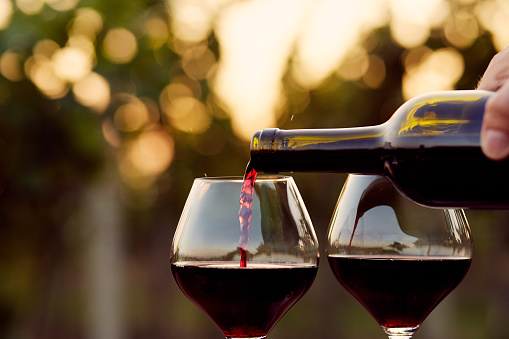
Take a stroll down the aisles at your favorite shop and you’re bound to come across some new labels. That’s because many wine shops, liquor stores and supermarkets are carving out space for the sector’s red blend trend—perhaps one of the fastest-growing vines in the wine segment.
Across the total off-premise wine landscape measured by Nielsen, red blends account for more than 13% of the $13 billion that consumers spent on table wine during the 52 weeks ended Sept. 12, 2015. That equates to about $1.7 billion, up from $1.15 billion for the same period in 2011, at which point red blends accounted for just under 11% of table wines.
Over the past five years, total annual wine sales (including sparkling) have grown $2.6 billion. In the 52 weeks ended Sept. 12, 2015, total wine dollar sales were up 4.7% on a year-over-year basis, following consecutive years of strong single-digit dollar gains for the previous three years. While sales growth of the table wine sub-category over the past year (4.5%) is not insignificant given the overall size of this segment, a major opportunity has clearly blossomed for wine blends, with domestically produced red blends leading the way.
In a way, red blends are currently the craft beer of the wine category. They’re hip, different and trending. They also have a higher price point than several other single varietals. And both their trendiness and price point are having an impact on sales. In the 52 weeks ending Sept. 12, 2015, red blends generated value growth of 8.7% and volume growth of 3.2%, with U.S. produced red blends leading the charge, growing at 11.0% on dollars and +4.8% on volume. So not only are consumers buying more red blends, much like other wine segments, they’re gravitating to more premium price points than in the past.
RED BLENDS ARE LEADING WINE GROWTH
BLEND IT AND THEY WILL COME
Inspired by the growth of blends over past couple of years, a flood of blends have come to market. In fact, more than 40% of the new entries in 2014 were blends, with more than three quarters of these being reds. No other wine type has even come close to the same amount of new offerings to market. Cabernet Sauvignon is the nearest challenger, accounting for about 10% of the new entrants, and still much larger in sales than red blends. Having a red blend in a wine supplier’s portfolio is almost a “must have” these days, with consumers seeking them out. And the winemaker certainly likes the flexibility and art that comes with mixing various grape varieties together.

So what sparked this great blend trend? When asked, 50% of Americans in a recent survey said blends are a great way to experiment with wine. Almost one-fourth (24%) say blends are more interesting than single varietals, and 20% say they’re a better value. An additional 19% said they like them just because they’re trendy. And about the same percentage of consumers say they buy blends as well as single varietal wines, as those that just buy the latter—led by Millennials currently aged 21-38, at 70 million in the U.S., now a huge generation of current and potential wine consumers in overall size. So it’s important for wineries to offer blends in their portfolios if they hope to be a part of the younger generational thinking—and spending.
The other trait about wine drinkers that plays into their consumption habits is that they buy the greatest variety of brands among adult beverage drinkers. In fact, almost 20% of wine drinkers in a recent survey said they’ve bought 10 or more wine brands in the past year. And when we look at the sub-categories with the most volume growth over the past year, red blends are at the top, with growth of just under 11% for the 52 weeks ending Sept. 12, 2015.

Notably, brand promiscuity is not homogenous across age groups. When we look across the generations, we see that younger generations—especially Millennials—are the most likely to try new brands, especially when it comes to beer and wine.

As with other areas of discretionary spending, adult beverage drinkers have a myriad of options when a drinking occasion rolls around. Retail formats and products are blurring, and many consumers are eager to experiment and try new things, particularly younger consumers.
Unlike many consumer products, adult beverages didn’t take much of a hit in the wake of the last recession. That said, we’re only drinking a little bit more now than we have in recent years—but we are certainly drinking better, meaning consumers are skewing toward more premium options. And younger adults are interested in trying new—blended—varieties. So with that in mind, spending trends clearly indicate that consumers aren’t holding back when it comes to adult beverages. The catch then for marketers, is to stay on top of current trends and meet brimming consumer desires when they’re hot and not stay in too long when things start to cool down.
Thanks to folks at Nielsen for this great article. To read the web version, click here.

